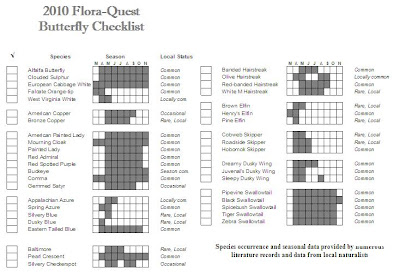Seasons change in due time, and I am not one to push them. Each one has something special to offer- winter: snow skiing, spring: wildflowers and warblers, summer: dragonflies! Oh man, I miss those dragonflies and the lovely wetland plants. Gorman Nature Center has a pond edged in Pickerel-weed, Pontederia cordata. This is one of my favorite spots to watch the wild-winged dragons in pursuit for food, mating and fighting. That pretty much sums up a dragonfly's lifestyle. It is just like an aquatic Las Vegas- without the gambling.
Gorman Nature Center has a pond edged in Pickerel-weed, Pontederia cordata. This is one of my favorite spots to watch the wild-winged dragons in pursuit for food, mating and fighting. That pretty much sums up a dragonfly's lifestyle. It is just like an aquatic Las Vegas- without the gambling.
 A river edge dragonfly, the American Rubyspot is commonly found hiding amongst Water- willow, Justicia americana. This beaut was photographed along the Batelle-Darby, which will be the location of the upcoming Great Lakes Odonata Meeting- July 9-11, 2010.
A river edge dragonfly, the American Rubyspot is commonly found hiding amongst Water- willow, Justicia americana. This beaut was photographed along the Batelle-Darby, which will be the location of the upcoming Great Lakes Odonata Meeting- July 9-11, 2010.
Keep an eye on the Ohio Odes website for details.
 Ah, a once in a lifer: Carolina Saddlebags (on a sedge, possibly Carex lacustris?), this is one worth longing to see. Maybe 2010 will be my lucky year again.
Ah, a once in a lifer: Carolina Saddlebags (on a sedge, possibly Carex lacustris?), this is one worth longing to see. Maybe 2010 will be my lucky year again.
 Least Clubtail is a bit of a rarity, found along the edge of the Black Fork in the Ashland park of the same name. This will be one of the field trip locations for the Managing Wetlands for Biodiversity Workshop- Ashland April 10, 2010, hosted by GMAS and FOWL.
Least Clubtail is a bit of a rarity, found along the edge of the Black Fork in the Ashland park of the same name. This will be one of the field trip locations for the Managing Wetlands for Biodiversity Workshop- Ashland April 10, 2010, hosted by GMAS and FOWL.
 And the coolest ever, Mr. Dragonfly himself (don't tell him I said that... ;) Dr. Dennis Paulson (shown here with Mary Jo White) who was infinitely patient with beginners at the Ohio Dragonfly Conference in 2007.
And the coolest ever, Mr. Dragonfly himself (don't tell him I said that... ;) Dr. Dennis Paulson (shown here with Mary Jo White) who was infinitely patient with beginners at the Ohio Dragonfly Conference in 2007.
So if you like dragonflies and wetland plants... high-tail it over to the Friends of Wetlands (FOWL) website and sign up for the workshop on Saturday April 10. John Mack and Jim Bissell will be on hand to teach us the ins and outs of wetland plants (can't have dragonflies without them.) And the added kicker: Greg Lipps, the salamander king!
Hope to see you there!
 Dr Alwash has been involved in engineering the re-flooding of the southern Iraq marshes, the cradle of mankind and the likely location of Eden. The marsh people of Iraq have thrived here for centuries, co-existing with the land and utilizing the marsh reeds for most of their needs, from fuel to building supplies, until Saddam intentionally left them high and dry. In order to punish the marsh people for rebelling against his power, Saddam drained the marshes- destroying their lives and livelihood.
Dr Alwash has been involved in engineering the re-flooding of the southern Iraq marshes, the cradle of mankind and the likely location of Eden. The marsh people of Iraq have thrived here for centuries, co-existing with the land and utilizing the marsh reeds for most of their needs, from fuel to building supplies, until Saddam intentionally left them high and dry. In order to punish the marsh people for rebelling against his power, Saddam drained the marshes- destroying their lives and livelihood.




 you'll want to
you'll want to 



 Argus, the butterfly hound, was having a tough go of it. With each step into the snow, he sunk elbow-to-shoulder deep, bringing all progress to a whimpering stand-still.
Argus, the butterfly hound, was having a tough go of it. With each step into the snow, he sunk elbow-to-shoulder deep, bringing all progress to a whimpering stand-still. 




























